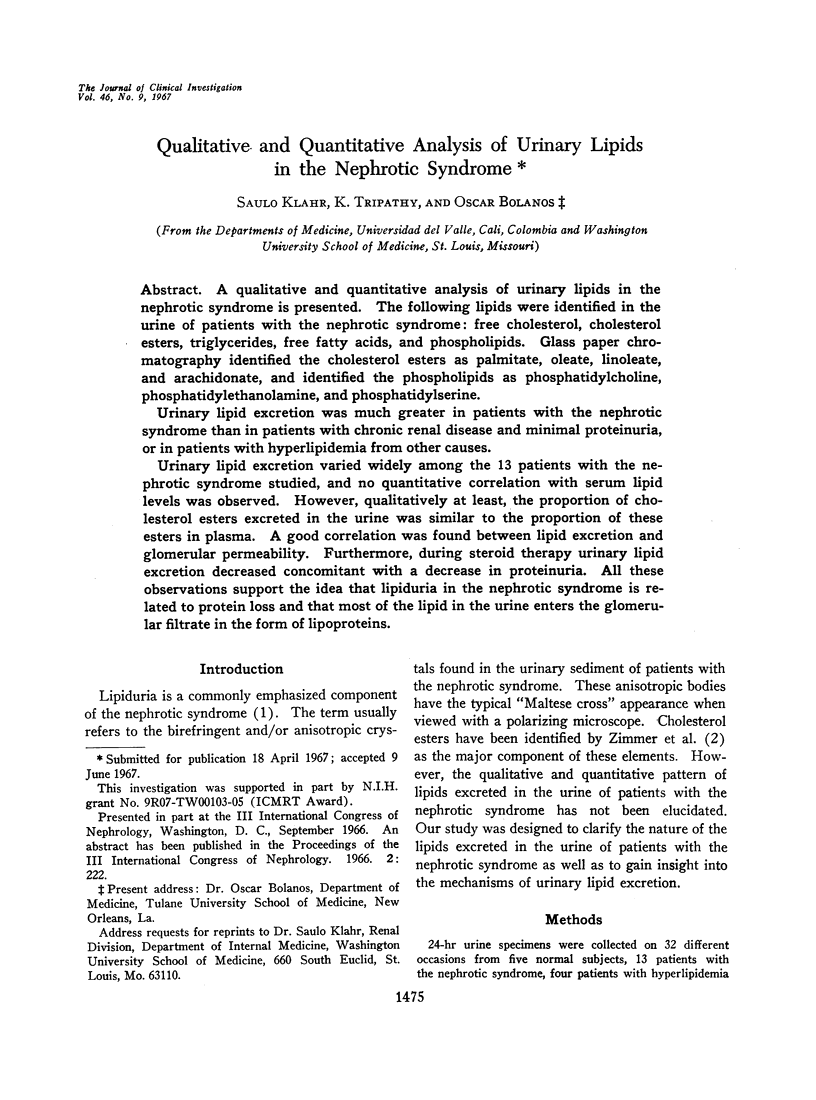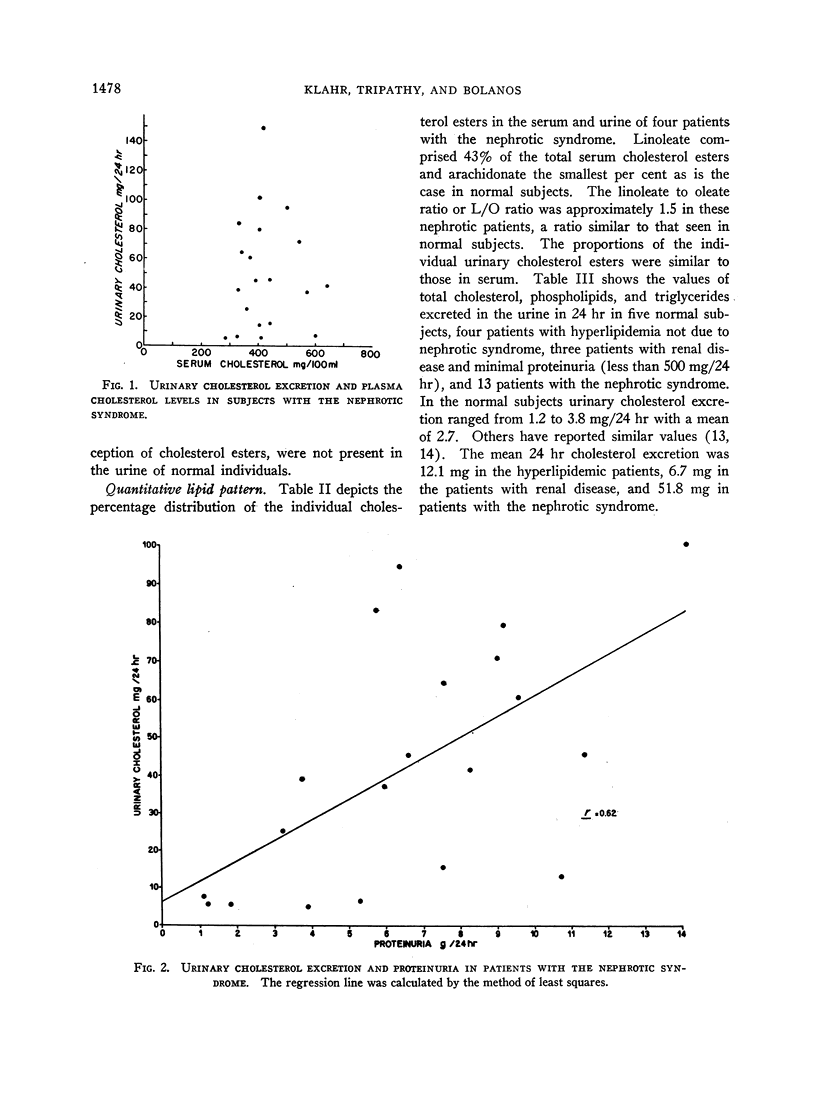Abstract
A qualitative and quantitative analysis of urinary lipids in the nephrotic syndrome is presented. The following lipids were identified in the urine of patients with the nephrotic syndrome: free cholesterol, cholesterol esters, triglycerides, free fatty acids, and phospholipids. Glass paper chromatography identified the cholesterol esters as palmitate, oleate, linoleate, and arachidonate, and identified the phospholipids as phosphatidylcholine, phosphatidylethanolamine, and phosphatidylserine.
Urinary lipid excretion was much greater in patients with the nephrotic syndrome than in patients with chronic renal disease and minimal proteinuria, or in patients with hyperlipidemia from other causes.
Urinary lipid excretion varied widely among the 13 patients with the nephrotic syndrome studied, and no quantitative correlation with serum lipid levels was observed. However, qualitatively at least, the proportion of cholesterol esters excreted in the urine was similar to the proportion of these esters in plasma. A good correlation was found between lipid excretion and glomerular permeability. Furthermore, during steroid therapy urinary lipid excretion decreased concomitant with a decrease in proteinuria. All these observations support the idea that lipiduria in the nephrotic syndrome is related to protein loss and that most of the lipid in the urine enters the glomerular filtrate in the form of lipoproteins.
Full text
PDF






Selected References
These references are in PubMed. This may not be the complete list of references from this article.
- Gardner J. A., Gainsborough H. Cholesterol Secretion in the Urine. Part I. Biochem J. 1925;19(4):667–671. doi: 10.1042/bj0190667. [DOI] [PMC free article] [PubMed] [Google Scholar]
- KOHN J. A simple method for the concentration of fluids containing protein. Nature. 1959 Apr 11;183(4667):1055–1055. doi: 10.1038/1831055a0. [DOI] [PubMed] [Google Scholar]
- NEUMAN M., WEST M., ZIMMERMAN H. J. The relationship between proteinuria and fatty elements in the urine sediment. Am J Med Sci. 1961 May;241:617–624. doi: 10.1097/00000441-196105000-00010. [DOI] [PubMed] [Google Scholar]
- SCHRADE W., BOHLE E., BECKER G. Uber die Ausscheidung von Lipoproteiden im Urin bei den sogenannten Albuminurien. Dtsch Arch Klin Med. 1955;202(4):415–436. [PubMed] [Google Scholar]
- STERN I., SHAPIRO B. A rapid and simple method for the determination of esterified fatty acids and for total fatty acids in blood. J Clin Pathol. 1953 May;6(2):158–160. doi: 10.1136/jcp.6.2.158. [DOI] [PMC free article] [PubMed] [Google Scholar]
- SWARTWOUT J. R., DIECKERT J. W., MILLER O. N., HAMILTON J. G. Quantitative glass paper chromatography: a microde-termination of plasma cholesterol. J Lipid Res. 1960 Jul;1:281–285. [PubMed] [Google Scholar]
- Smetana H., Johnson F. R. The Origin of Colloid and Lipoid Droplets in the Epithelial Cells of the Renal Tubules. Am J Pathol. 1942 Nov;18(6):1029–1049. [PMC free article] [PubMed] [Google Scholar]
- ZIMMER J. G., DEWEY R., WATERHOUSE C., TERRY R. The origin and nature of anisotropic urinary lipids in the nephrotic syndrome. Ann Intern Med. 1961 Feb;54:205–214. doi: 10.7326/0003-4819-54-2-205. [DOI] [PubMed] [Google Scholar]
- ZLATKIS A., ZAK B., BOYLE A. J. A new method for the direct determination of serum cholesterol. J Lab Clin Med. 1953 Mar;41(3):486–492. [PubMed] [Google Scholar]


